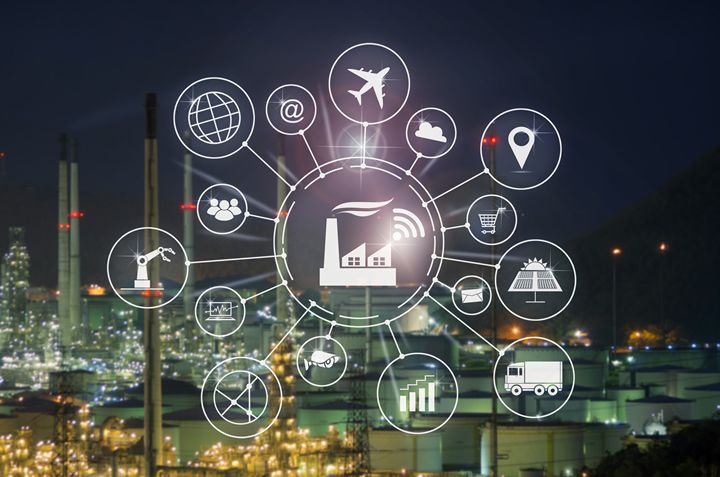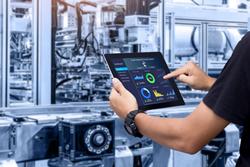It’s essential to start educating leaders on the powerful advantages of implementing AI. Highlighting benefits like improved cost-effectiveness, optimized proficiency, and reduced resources could lead them to embrace the latest evolution of workplace technology.
 Barriers to Wider AI Adoption in the Supply Chain Realm
Barriers to Wider AI Adoption in the Supply Chain Realm

Q&A with Ashish Kumar, Assistant Vice President of Operations | Chetu
Tell us about yourself and your role with Chetu. Please include how you go involved in technology, emphasize your supply chain tech expertise, and briefly mention what you find challenging in a Supply chain project. Just 2-3 paragraphs.
 In April 2024, I was promoted to the position of Assistant Vice President at Chetu, having previously served as the Director of Operations where I handled the Supply Chain and Retail verticals for Chetu. My current responsibilities include growing our business, particularly with existing accounts, and overseeing strategic initiatives to enhance client relationships.
In April 2024, I was promoted to the position of Assistant Vice President at Chetu, having previously served as the Director of Operations where I handled the Supply Chain and Retail verticals for Chetu. My current responsibilities include growing our business, particularly with existing accounts, and overseeing strategic initiatives to enhance client relationships.
My journey in technology began during my college years about 25 years ago. I started my career as a software developer in an oil and gas company, which laid the foundation for my extensive experience in various domains, including CRM, Retail, eCommerce, POS, Supply Chain, WMS, Shipping, Delivery, and Distribution. My expertise in supply chain technology is comprehensive, spanning from warehouse management systems to shipping and delivery solutions.
One of the most challenging aspects of supply chain projects is integrating diverse systems and ensuring seamless communication across the supply chain network. Addressing these challenges requires a deep understanding of both the technological and operational facets, as well as effective collaboration with stakeholders to align objectives and expectations.
How would you define the greatest shifts AI is driving in modern supply chains? What do they look like in practice?
Modern supply chain management is experiencing revolutionary technological changes that transcend traditional production methods. Software companies are pioneering these changes by developing AI solutions for areas of concern and ensuring adequate supply chain operations. From planning production schedules and managing inventory to enhancing demand predictions and optimizing shipments, leveraging AI can refine tasks across the board. Applying this level of innovation guarantees efficiency, reliability, and accuracy, permitting staff to focus on transforming the AI’s findings into meaningful action steps.
Supply chain companies underwent many production and inventory setbacks within the past five years. Labor shortages, geopolitical conflicts, cybersecurity, unreliable suppliers, and fluctuating demands were some of the most prevalent obstacles. AI solutions are combatting these disruptions. In cybersecurity, for example, AI algorithms can detect and prevent potential cyber threats by optimizing data security. They also track usage patterns to enhance data encryption and identify fraudulent activity.
What do you see as the most significant barriers to wider AI adoption in the supply chain realm, and how might they be overcome?
Arguably, one of the most significant barriers that prevent supply chain companies from using AI systems is the lack of AI knowledge within an organization. It’s a classic case of “blissful ignorance,” which is why it’s essential to start educating leaders on the powerful advantages of implementing AI. Highlighting benefits like improved cost-effectiveness, optimized proficiency, and reduced resources could lead them to embrace the latest evolution of workplace technology.
Bergur Thormundsson, a research expert with Statista, published a survey where 600 senior technology personnel at supply chain companies were asked about AI usage. Roughly 38% said integrating AI into their operations will be critical by 2025. Augmenting different roles could result in employees carrying out new hybrid structures, improving productivity, and acquiring more skills, which could increase growth opportunities. For all these reasons, organizations must overcome barriers when they’re initially trying to apply AI-driven solutions.
Can you highlight some emerging AI use cases in supply chain management that excite you, particularly ones that are less talked about in mainstream discussions?
I’m particularly interested in how AI is used to optimize warehouse layouts, analyze supplier risks, and enhance sustainability efforts. Of those three, I’ll focus on supplier risk management.
AI can analyze a potential supplier’s data from news outlets, social media, and financial reports to evaluate economic stability and regulation compliance. By thoroughly analyzing these suppliers, your team can determine whether they are reliable partners before signing any contracts. Some process disruptions, like natural disasters or geopolitical events, are out of a supplier’s control. However, it’s still in your company’s best interest to assess possible pitfalls to prevent any errors that could leave your organization in a difficult position.
How is AI transforming demand forecasting? What level of accuracy increases are we seeing compared to traditional methods?
Growing geopolitical tensions cause supply chain companies to face heightened levels of uncertainty, especially when predicting upcoming product demands. Advanced AI algorithms analyze large datasets in real time to anticipate inventory and market changes. They use current market trends, historical consumer patterns, and economic factors. Utilizing these results can prevent stockouts and overstocking, which improves your company’s cost-effectiveness. It can also streamline the shipment process and respond faster to setbacks, mitigating issues of timely deliverables to customers.
Traditional methods primarily focused on past performances rather than future ones, but AI specializes in predictive analytics across all industries, not just supply chains. AI models are simply more agile and adaptable than traditional analytics, which require frequent manual updates. With an ever-evolving system constantly teaching itself to perform sufficient calculations, supply chain experts can rest assured that this technology isn’t overlooking complex data patterns like how traditional methods or humans might.
Where does AI hold the most transformative potential within supply chain planning and optimization?
Depending on a company's specific needs and areas of improvement, AI can significantly impact supply chain planning and overall optimization. AI systems can track material and warehouse capacity limits to meet demands. They can also prioritize tasks like order fulfillment, inventory and storage updates, risk management, and supplier communication.
One transformative approach is utilizing AI automation. Mundane, manual tasks like data entry aren’t always quick and easy. These tedious but necessary duties consume much of employees’ time, taking their attention away from critical projects. Substituting human intervention with AI to perform these assignments could allow your team to devote more time to planning and structuring.
How can companies ensure successful collaboration between their supply chain experts and the AI development teams?
During the transitional period, developers and supply chain experts must communicate clearly with one another on an ongoing basis. Each team needs to define its objectives, metrics, and responsibilities so everyone understands the desired outcomes. Also, sharing knowledge about each other’s respective fields could positively impact collaboration and results. For instance, a supply chain leader could educate a developer on practical, real-world scenarios. Hence, the developer has a better idea of how to customize the AI model to fit those needs.
Keeping up with the latest industry innovations could help your organization stay on par with competitors and possibly exceed their milestones. There might be some reluctance or skepticism among team members, but communicating the advantages of this transformative technology could ease their concerns. AI adoption is becoming a standard within supply chain management, and its integration will not slow down anytime soon.
The content & opinions in this article are the author’s and do not necessarily represent the views of ManufacturingTomorrow
Comments (0)
This post does not have any comments. Be the first to leave a comment below.
Featured Product

